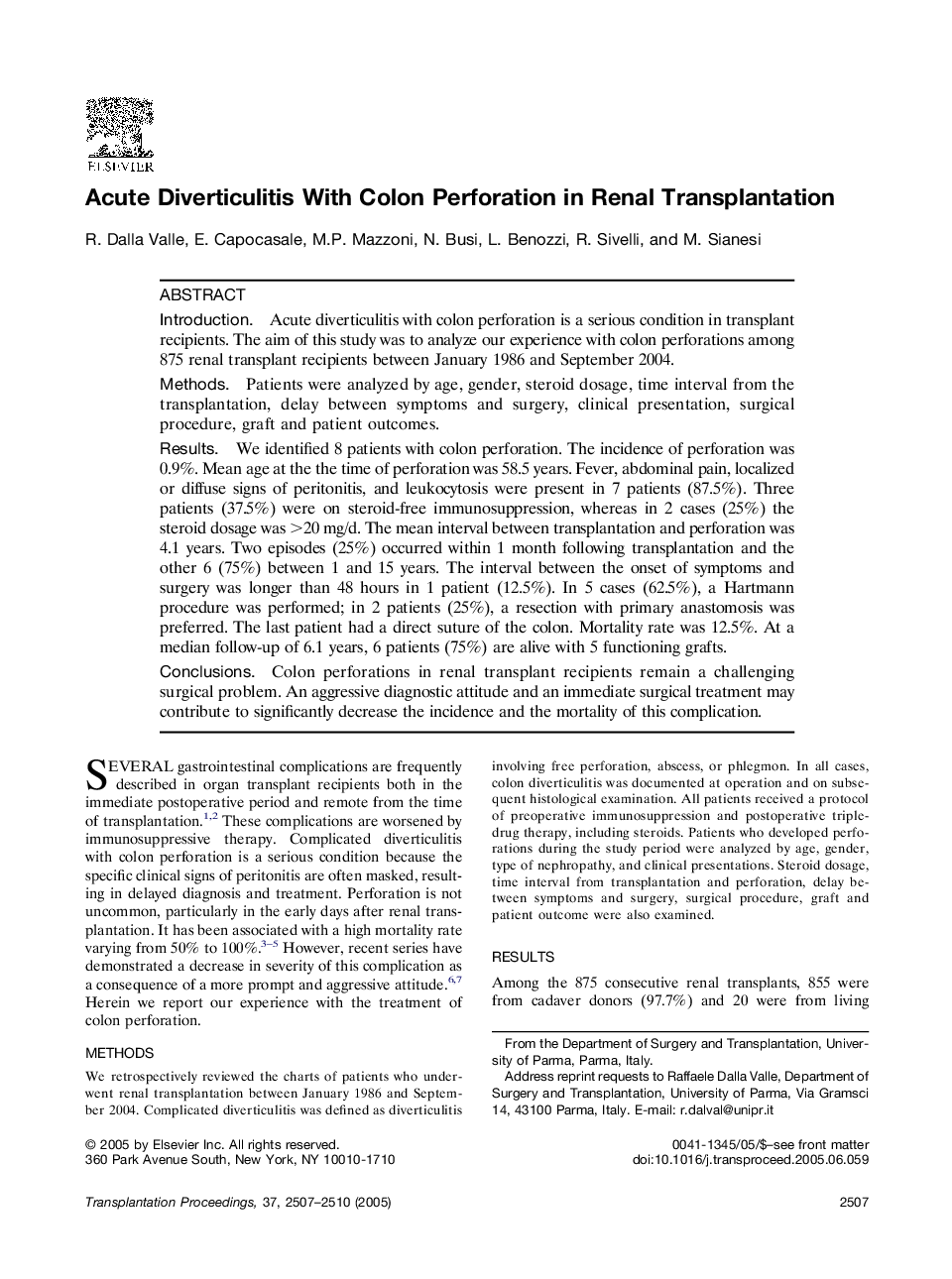| Article ID | Journal | Published Year | Pages | File Type |
|---|---|---|---|---|
| 4263633 | Transplantation Proceedings | 2005 | 4 Pages |
IntroductionAcute diverticulitis with colon perforation is a serious condition in transplant recipients. The aim of this study was to analyze our experience with colon perforations among 875 renal transplant recipients between January 1986 and September 2004.MethodsPatients were analyzed by age, gender, steroid dosage, time interval from the transplantation, delay between symptoms and surgery, clinical presentation, surgical procedure, graft and patient outcomes.ResultsWe identified 8 patients with colon perforation. The incidence of perforation was 0.9%. Mean age at the the time of perforation was 58.5 years. Fever, abdominal pain, localized or diffuse signs of peritonitis, and leukocytosis were present in 7 patients (87.5%). Three patients (37.5%) were on steroid-free immunosuppression, whereas in 2 cases (25%) the steroid dosage was >20 mg/d. The mean interval between transplantation and perforation was 4.1 years. Two episodes (25%) occurred within 1 month following transplantation and the other 6 (75%) between 1 and 15 years. The interval between the onset of symptoms and surgery was longer than 48 hours in 1 patient (12.5%). In 5 cases (62.5%), a Hartmann procedure was performed; in 2 patients (25%), a resection with primary anastomosis was preferred. The last patient had a direct suture of the colon. Mortality rate was 12.5%. At a median follow-up of 6.1 years, 6 patients (75%) are alive with 5 functioning grafts.ConclusionsColon perforations in renal transplant recipients remain a challenging surgical problem. An aggressive diagnostic attitude and an immediate surgical treatment may contribute to significantly decrease the incidence and the mortality of this complication.
